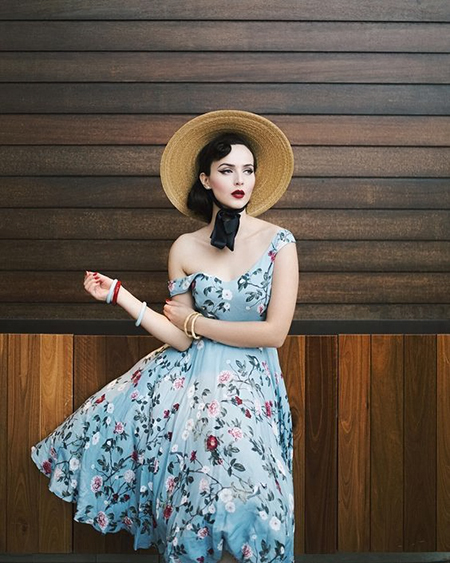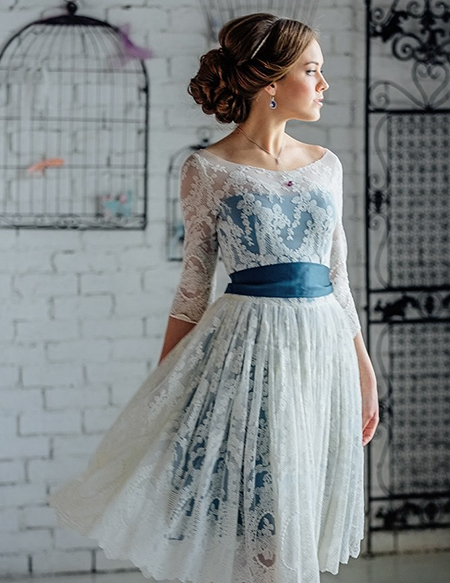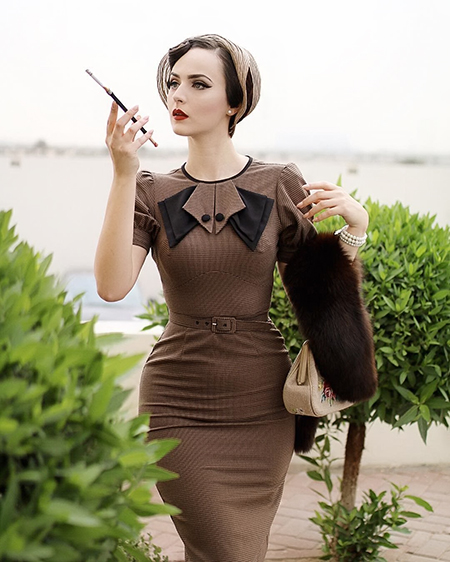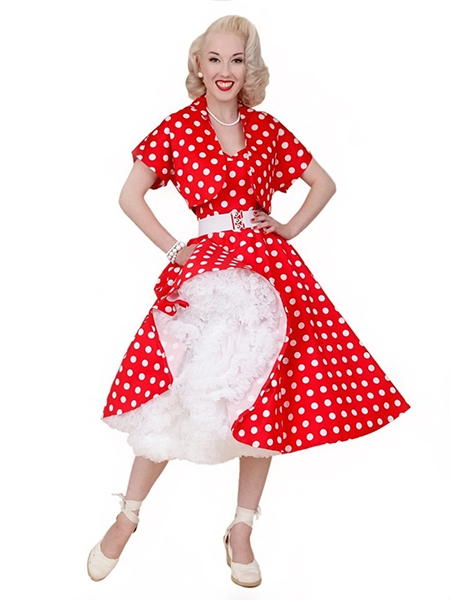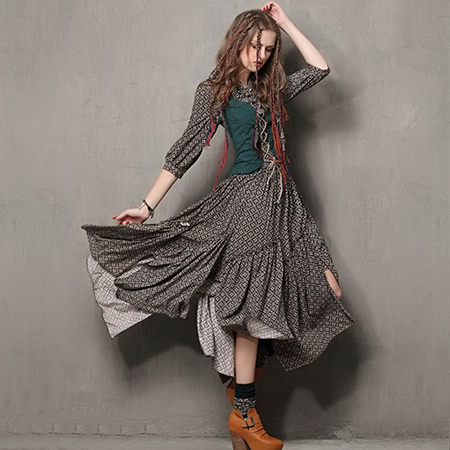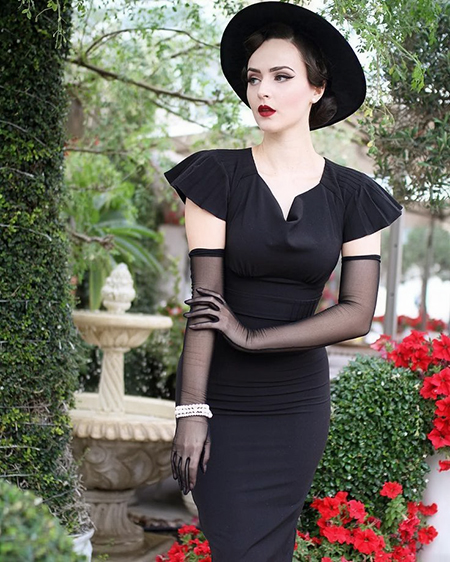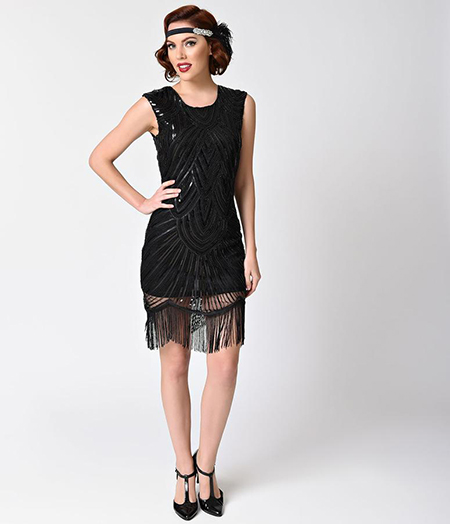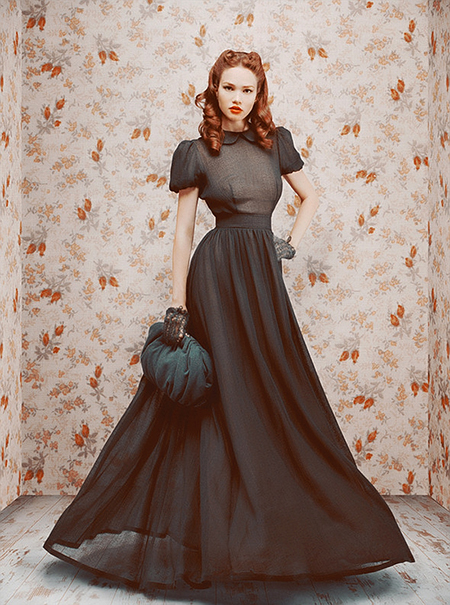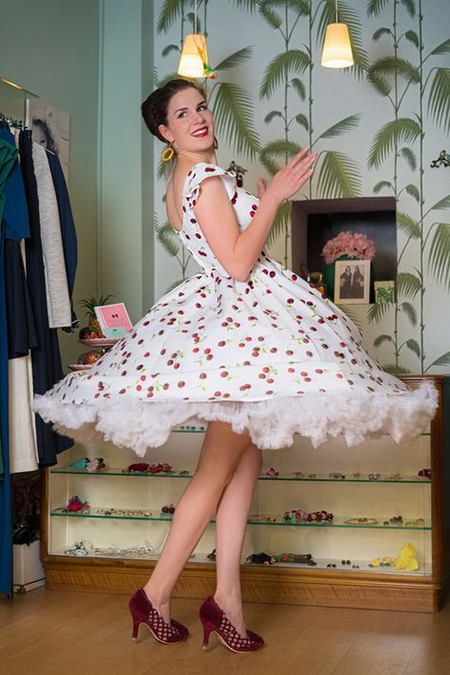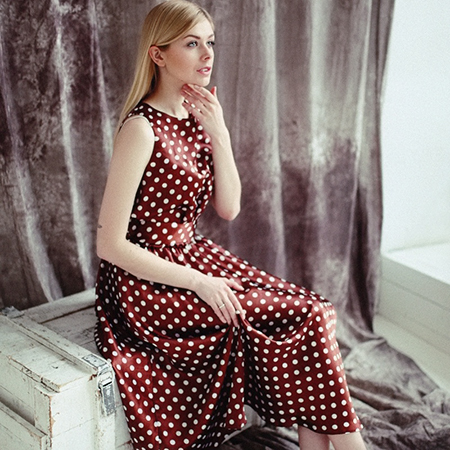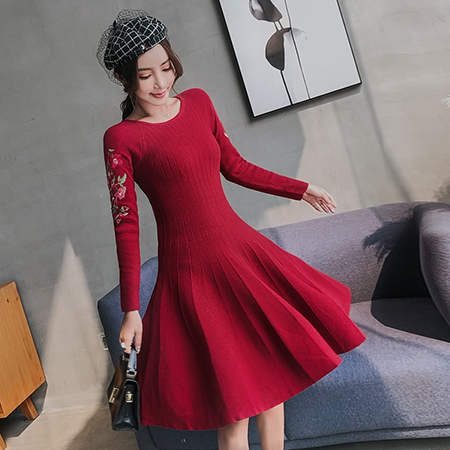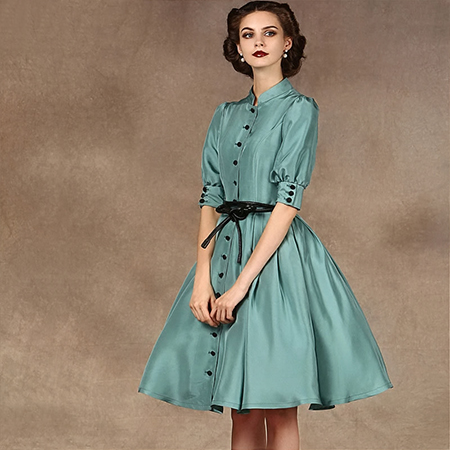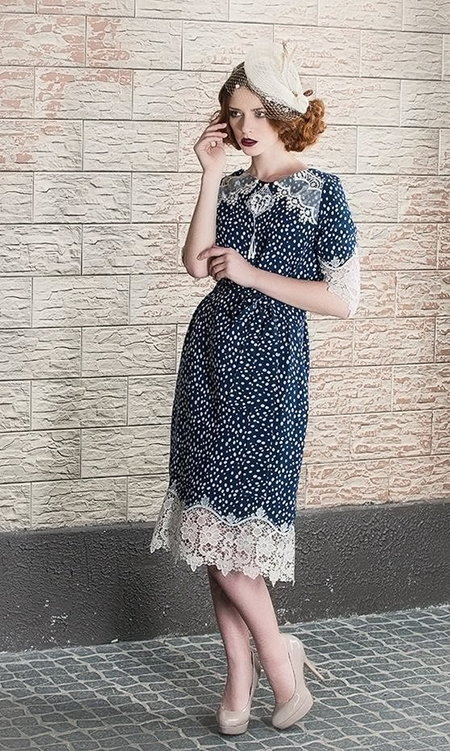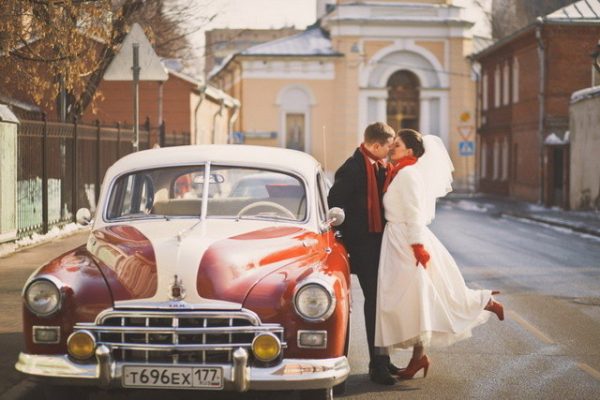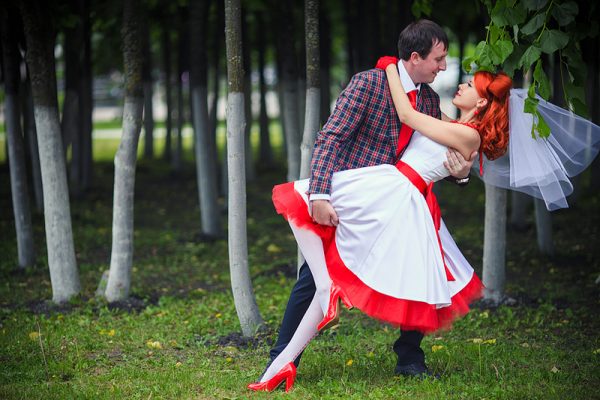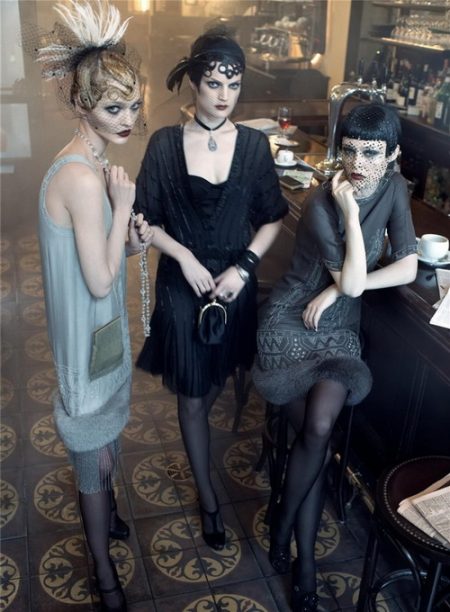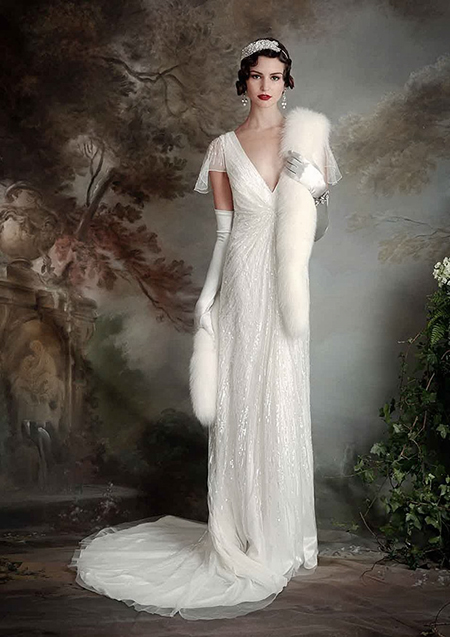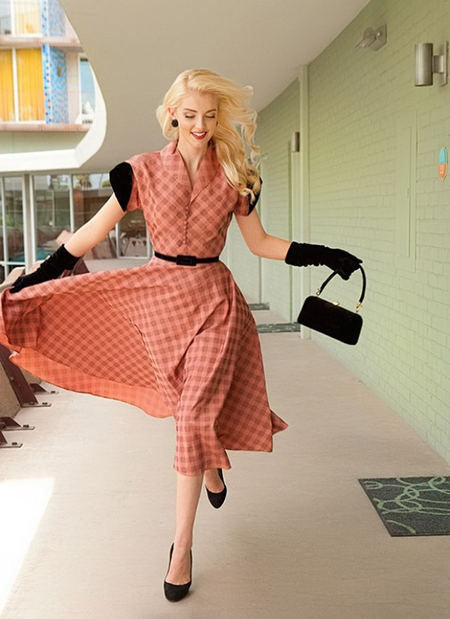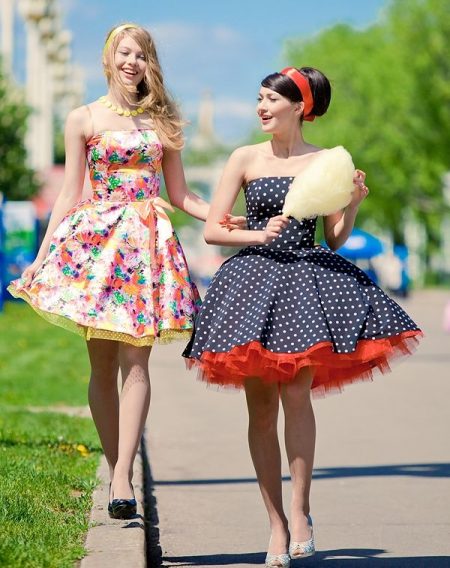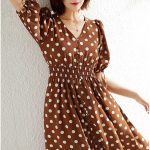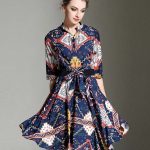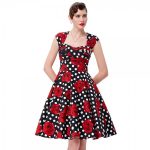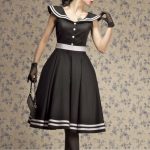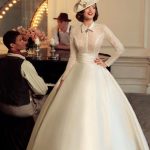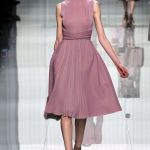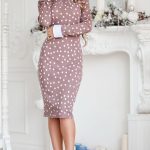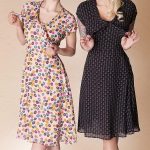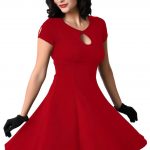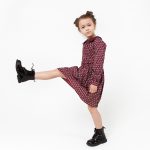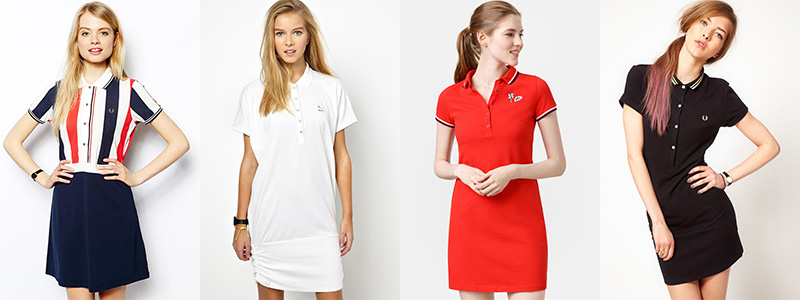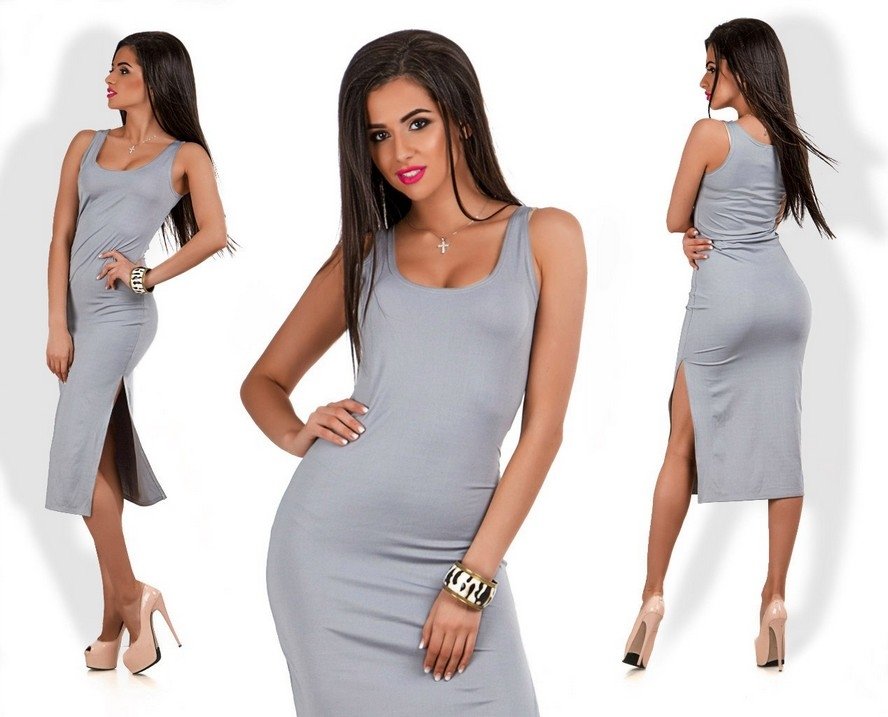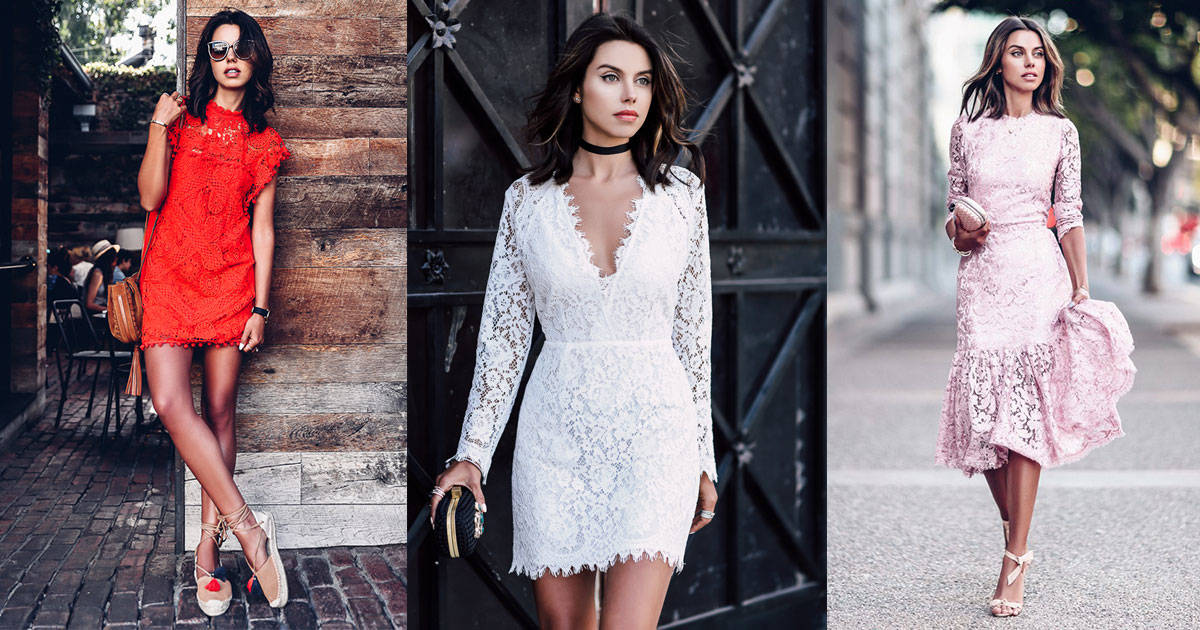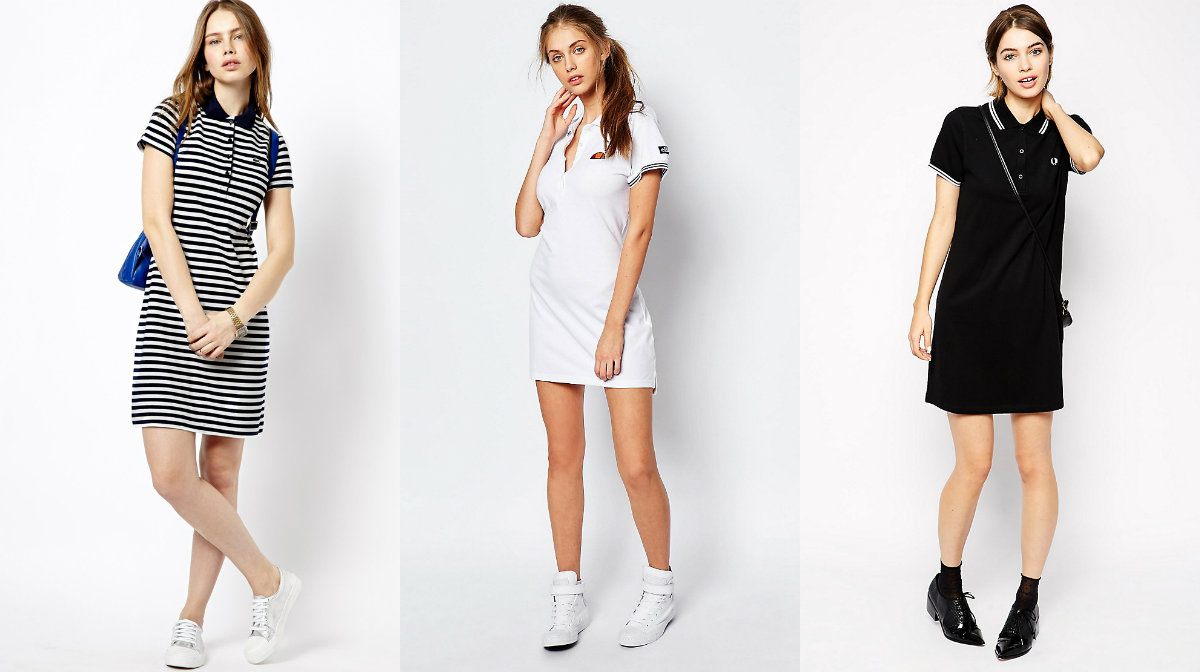The best choice for an elegant girl is considered to be a classic designer outfit. Since fashion is cyclical, today it is relevant to wear clothes in the style of the 20-80s. For example, vintage dresses are suitable for any celebration or for everyday wear. Correctly selected models from the last century emphasize femininity, fit well on the figure and hide flaws. You can safely open your grandmother's chest and give new life to her favorite dresses from her youth.
Peculiarities
Vintage dress is considered to be clothing that was popular in the 20-80s of the last century.. The outfit can be plain, polka dot, with knitted or guipure elements, various decor. The main thing is that the model was sewn no earlier than 20-30 years ago or made in the style of the last century.
Each designer model looks incredibly feminine. If this dress was taken out of grandma's dresser, it has a special history. Old collections were always made of natural fabrics, so they were preserved in perfect condition. Dresses were decorated by hand using high-quality fittings.
Vintage dresses are not only "granny's" things. Model options in the style of the 20-80s:
- classics – designer dresses created no later than the 80s;
- stylized vintage – modern outfits made by designers in the characteristic features of past years;
- neovintage – clothes that have been altered or hemmed while maintaining the style;
- combination dresses – modern models with vintage decor (buttons, lace, brooches).
Modern designer dresses made from old fabrics look gorgeous. Their quality is top notch, and finding such an outfit is not easy.
When wearing a vintage dress, a fashionista can be sure that she will not find another one like it anywhere. Each model, preserved from the last century, is unique. The outfits are ideal for young, bright girls who want to emphasize their femininity. Dresses from the 50s with a fluffy skirt will look good on those with voluminous hips. A-line items will hide flaws and are suitable for “apple” and “inverted triangle” figures.
Popular models
In the last century, as now, girls tried to keep up with the times and took an example from the stars of the screen, stage, theater. Designers were influenced by the political situation, standard of living, public sentiment. Popular models of vintage dresses, their silhouettes and features:
- Products of the 20-30s. During this period, women were guided by the images of Hollywood actresses. Dresses were short, with a straight silhouette, without a neckline or sleeves. Evening options had a torn or asymmetrical hem, an open back, fringe. By the end of the decade, mini dresses with square shoulders, a stand-up collar, long sleeves and geometric patterns became popular.
- Outfits of the 40s. The events of World War II provoked serious changes in women's fashion. Girls began to prefer convenience, comfort and cheapness of products. Clothes resembled military uniforms, but the fabric had a small pattern (polka dots, floral print). For everyday wear, they chose flared skirts to the middle of the calf, for a party they sewed fitted dresses without straps.
- Models of the 50s-60s. Clothes of that period best emphasized femininity and sexuality. The doll vintage dress had a fluffy skirt to the knees, wide straps or lantern sleeves. The waist was emphasized with a belt or a bow on the back. The fabric combined pink and gray shades, had large polka dots or a floral print. By the end of the decade, young girls began to wear short trapezoid models made of artificial leather, choosing high boots without heels for them.
- Outfits from the 70s and 80s. During this period, floor-length dresses that resembled shapeless robes returned in popularity. The disco style also brought a wide variety of bright midi and mini outfits to women's fashion. Short tunic dresses were combined with multi-colored leggings. In the 80s, there was a desire to give the figure an hourglass silhouette, so frills, ruffles, bows, and sleeves of different lengths began to be used.
The retro style dress looks modern and unusual. To purchase quality clothing, it is recommended to look through old collections of famous designers. The surviving models will be unique, so their cost exceeds the standard price tag. From the new collections, the best option will be a vintage dress by Vanessa Montoro.

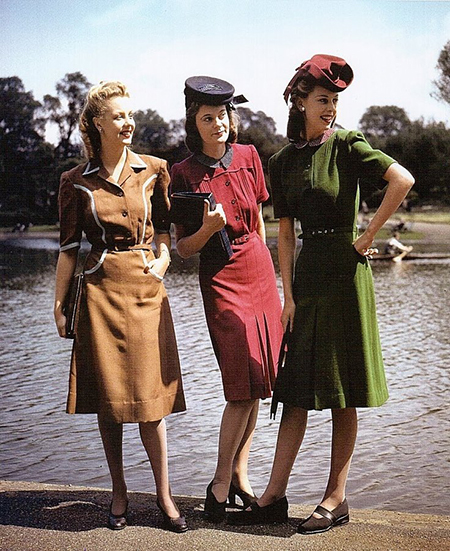


Styles
Vintage dresses combine outfits from an entire era, so fashionistas have a wide choice. Taking into account age and body type, you can choose a chic feminine look. A variety of vintage dress styles:
- fitted dresses of medium length;
- models with skirts flared from the calf;
- princess outfits with a fluffy bottom;
- clothes with an original cut, asymmetrical skirt, unusual neckline;
- short and straight dresses with ruffles, fringe;
- long, shapeless boho style models.
Curvy young girls will look good in a dress with a narrow bodice and a full skirt or an A-line model. A straight or trapezoid mini will highlight a slim figure. Vintage dresses from the 50s can be worn to work or school every day.
In the 20s-40s, mid-calf dresses were fashionable, which were worn in everyday life and for celebrations. For parties, long models with ruffles along the hem were chosen, which allowed to create a "fishtail" silhouette. In the 50s-60s, girls showed off in mid-length outfits with full skirts. Midi and maxi outfits regained popularity in the 70s-80s.
Fabrics and textures
Designers of the last century used various fabrics to sew fashionable dresses. In the 10-20s, flowing silk or chiffon were popular, evening dresses were decorated with beads, glass beads, sequins and fringe. In the next decade, options made of coarse taffeta came into fashion, summer clothes were made of light cotton. Dresses were decorated with collars, pockets, small ruffles on the sleeves and hem.
During the war and post-war times, crepe became popular, and by the end of the 50s, satin with a silk lining was used. Original vintage dresses were decorated with beads, ribbons, and sequins. Festive or wedding dresses were made of tulle or organza, which were decorated with bows, ruffles, and lace.
In the 70s, designers used cotton and knitwear. To give an outfit an hourglass silhouette, ruffles, flounces, drapery with coarse fabric, satin belts were sewn onto the collar, neckline, skirt or waistline. In the 80s, denim, leatherette, stretch and other synthetic materials became popular. Each model had a straight cut, but was distinguished by bright colors and geometric prints.
Lace and guipure have always been popular, they were used in images regardless of fashion trends. Designers sewed wedding or formal dresses with silk lining or decorated everyday dresses.




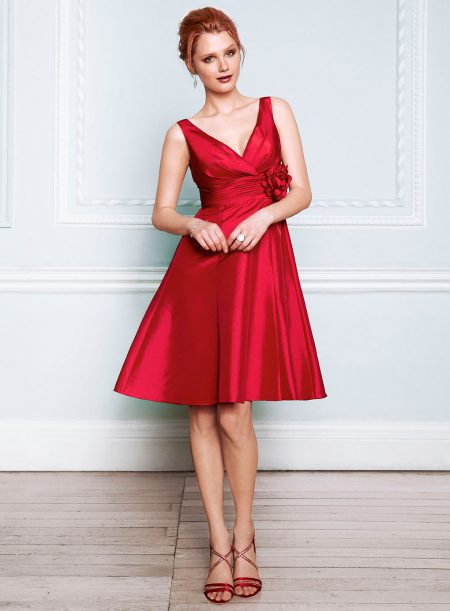

Colors and prints
Fashion from the last century has a lot of color and print options that still look relevant today. A white dress sewn in vintage style, as well as gold and silver outfits are suitable for a festive evening. Any collection of the last century included black, which looks elegant and feminine. Beads, lace, glass beads, and ruffles look chic on dark shades. Also, from the 20s to the 80s, red was used in all its shades: cherry, burgundy, titian, scarlet, carrot.
The classification of popular colors and prints by year is presented in the table.
| Years | Colors and prints |
| 20th | Pastel colors (beige, light brown, soft pink and light blue), blue, white, floral print. |
| 30s | White, gold and silver, stripes, checks, large and small polka dots, floral print. |
| 40s | Emerald, dark green, cream, burgundy, cherry, vertical stripes, geometric and small floral prints. |
| 50's | White, pink and grey, checkered, zigzag, floral print, large polka dots. |
| 60's | Brown, carrot, scarlet, pink, light green, orange. |
| 70's | Lemon, blue, purple, floral and animal print (leopard, zebra). |
| 80's | Yellow, lime, light green, green, pink, stripes, checkered, floral print, geometric. |
Where to wear
Retro style dresses are perfect for a festive evening, a film premiere, an exhibition or a museum. A straight or trapezoid cut dress in subdued shades can be used for an everyday look. A vintage cocktail dress for school is especially relevant for a graduation party.
Summer short or long dresses are made of cotton, jersey or chiffon. For everyday wear, you need to choose fitted models with a print: flower, polka dot, check. Dresses with a fluffy or pleated skirt look more festive, which are suitable for visiting a cafe or a party in the summer.
Evening dresses are made of velvet, silk, satin, decorated with beads, stones, embroidery. A stylish vintage dress in European style can be seen on the red carpet. An image with a maxi or midi skirt looks feminine and sexy.
Vintage wedding dress models are the best option for girls who prefer classic silhouettes. They are sewn from lace, silk and satin in white and ivory colors. By choosing this image, you can create a themed wedding in the style of the 20s.
If you have an old granny dress at home, you can safely wear it. To make the look more modern, use a thin leather belt, or throw on a jacket. For a casual look, it is recommended to wear ballet flats, sandals with a comfortable wedge or cork sole. For a special event or wedding, you should choose an evening vintage dress and shoes in pastel shades.
What to wear with
When choosing an image, you need to focus on the features of the outfit. Clothes from the 20s and 30s are complemented by small hats with feathers, pearl necklaces, boas, fur capes, miniature handbags on a chain or clutches. A vintage prom dress in the style of the 50s and 60s is combined with beads, gloves, patent leather or satin belts, large earrings, and velvet handbags.
The 70s look is complemented by large glasses and earrings, bright scarves, high-heeled shoes. For the disco style, plastic jewelry, boots, patent leather ankle boots are selected. Bright leggings, handbags with appliques, embroidery, beads and sequins will suit short trapezoid dresses of the 80s.
Vintage models in modern collections
The most popular brand that sells vintage-style dress models is the fashion house of Vanessa Montoro. The collections feature clothing made from high-quality silk yarn. The models use an unusual knitting technique, which allows you to create a chic look.
Vintage motifs from the 50s-70s can be seen in the new Dolce&Gabbana collections. The models are made of translucent light fabrics, each dress has a geometric or floral print. Large embroidered roses look original on A-line or trapezoidal clothing.
Vintage dresses are also present at fashion shows of famous designers: Chanel, Dior, Yves Saint Laurent, Badgley Mischka. Branded clothes are decorated with ruffles, flounces, satin or guipure ribbons. You can choose an outfit made of chiffon, satin, silk, velvet or lace. Animal prints, which were at the peak of popularity in the 80s, are also becoming fashionable.
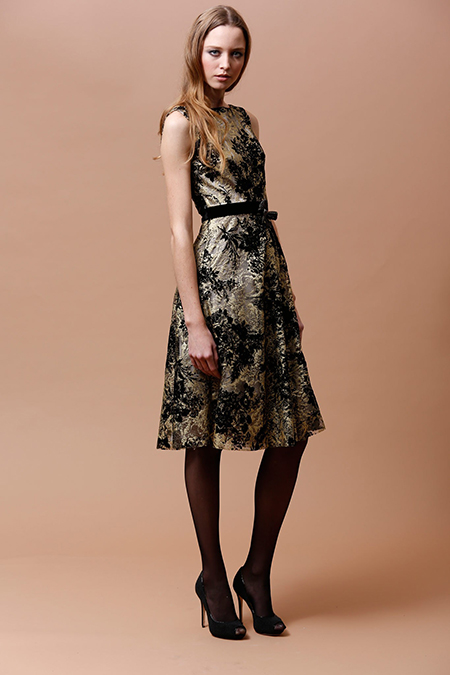
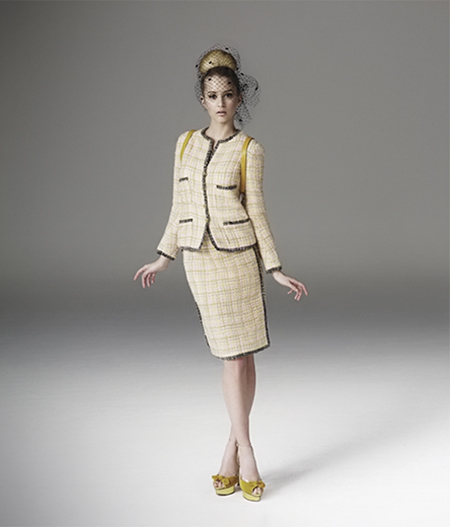
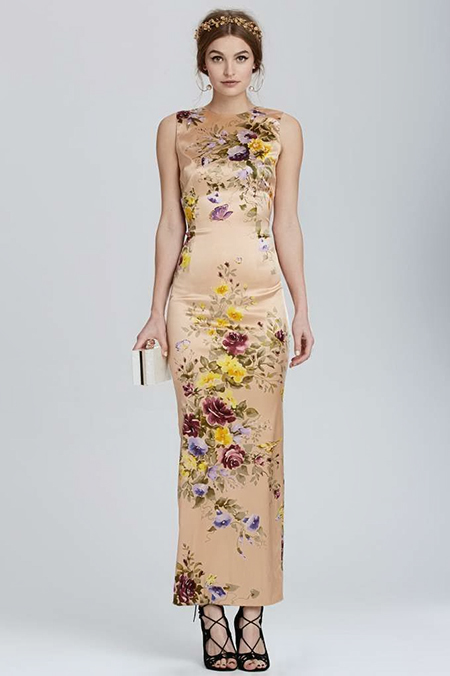
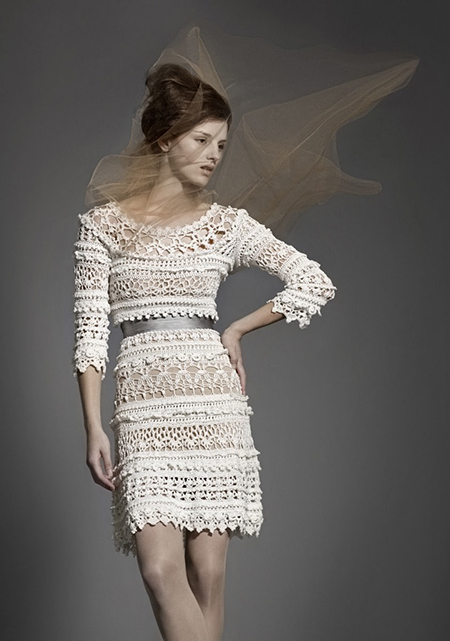
Video


